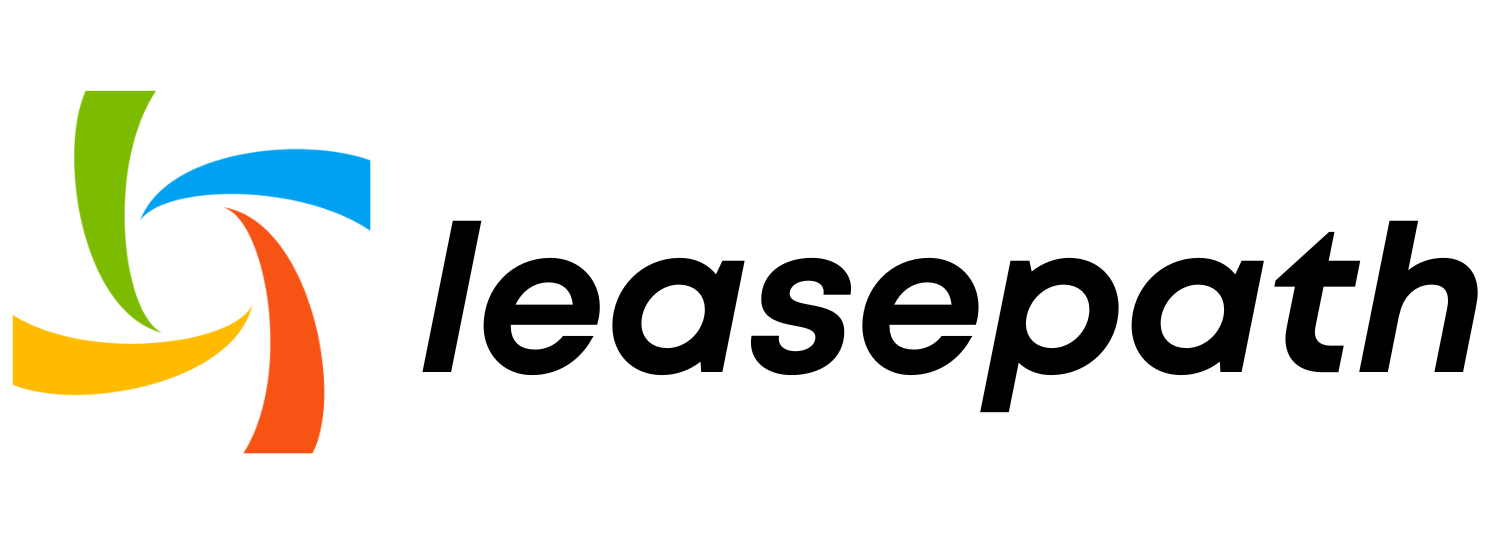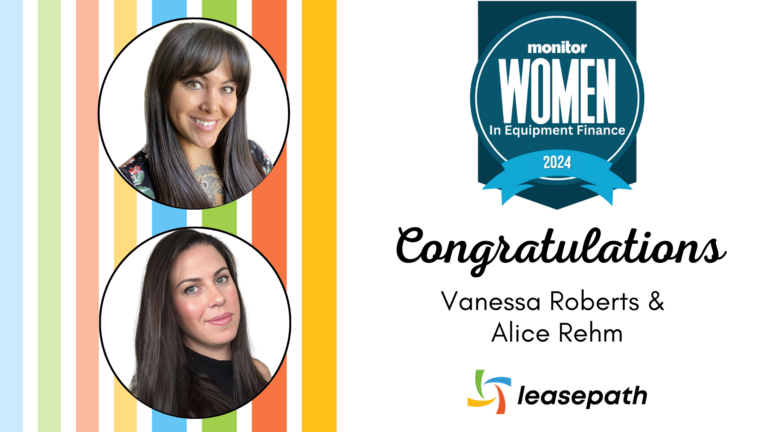In a Q&A, Michael Baez and Sean Scampton of Leasepath, Diane Croessmann of The Alta Group, Scott Nelson of Tamarack Technology, and William Verhelle of Innovation Finance USA give their take on why companies are hesitant to embrace new technology tools in the U.S. equipment finance marketplace with anonymous writer Dexter Van Dango.

Technology can be a godsend. It can help improve manual processes and automate functions that are prone to human error. It can increase speed and improve efficiencies in many ways. With that in mind, I’m trying to understand why there is such hesitancy to adopt new technologies within the equipment finance industry. For years I have been a believer in technology and the benefits it brings to businesses. But somewhere along the way, many of our colleagues and industry participants have grown fearful of adopting the technology tools that could improve their business processes and overall customer experience.

Years ago, I launched an exciting new online portal for authorized dealers of one of our vendor partners. The portal allowed salespeople to submit applications, monitor the credit review process, receive documentation packages for approved transactions and track the signatory process and funding for completed transactions.
It was a dud. It failed. Salespeople didn’t want to be required to participate in the process. They just wanted the results. Their attitude was “Approve my deal and pay me fast — keep your tools to yourself.” Subsequently, it became more difficult to garner executive support for enhancements and improvements to our online tools. They were viewed as expensive investments that yielded no return.
I reached out to a few subject matter experts to get their take on the reason for such reluctance to take advantage of these new tools. I asked three questions of each person to gain a better understanding of why our industry finds itself in the position we are in today.
My subject matter experts include Michael Baez, Vice President of Professional Services and Customer Strategy at Leasepath; Diane Croessmann, Director at The Alta Group; Scott Nelson, President and Chief Digital Officer at Tamarack Technology; Sean Scampton, Director of Sales and Marketing at Leasepath; and William (Bill) Verhelle, CEO and founder of Innovation Finance USA.

Some might ask why I solicited contributions from two people from Leasepath. The answer is simple. Baez and Scampton come from two different generations. Baez is a baby boomer and Scampton is a millennial. I wanted to determine whether their generations contributed to different outlooks. As it turned out, their views were very similar.
Meanwhile, Croessmann is a consultant to the industry but also a former practitioner when she was at Xerox and Lenovo. Nelson is an interesting dude; I met him at the Equipment Leasing and Finance Association’s Annual Convention last October and find him to be one of the bright lights of our industry. And finally, Bill Verhelle, who I described as the poster boy for NextGen and fintech solutions, is a luminary for tech adaptation. His QuickFi platform has startled most who have seen it demonstrated and left competitors shaking in their boots wondering how they can possibly compete.
My first question to the group was based on my experience described earlier involving the development of an online tool for a strong technology vendor that was pleased with the product but whose salespeople broadly rejected the nuisance of submitting applications online and following up for portal-generated documentation.
How can companies that have invested in technology solutions improve the utilization of the tools they are providing to their vendor partners? It seems that emailing a name and a dollar amount is the only interaction vendor sales reps want to have with their financing partners.

MICHAEL Baez: Companies that invest in technology solutions often do so without also making the investment to understand the journey and experience of the vendor and end-user customer. Best-in-class organizations have a full and complete understanding of the vendor experience and use that to drive the adoption of technology solutions.
DIANE Croessmann: It depends on the tools and the vendor. If a vendor is fully vested in a financing program and has the highest level of support from CEO down in the organization, they will be more enthusiastic in investing in the integration of tools that drive financing. Otherwise, they view financing as ancillary to their sales process and, in some cases, disruptive. Companies who are more skeptical of the value of a financing program will only need enough information to comply with three things: 1) tracking volumes to ensure that any vendor program compensation is reliable, 2) documenting any rate buy downs (if they exist) and 3) complying with direct sales rep incentive programs (if they exist). In many cases, all of this involves manual processes and consumes vendor resources.
SCOTT Nelson: One of the big advantages of cloud-based digital systems is that they enable secure exchange and use of both data and analysis which is critical to partner communications. I suspect that “emailing a name and a dollar amount” is a vendor-partner’s preferred method of interaction. I think it is a legacy “fire and forget” model for which they have settled. Our view is that digital business intelligence platforms should be built with the ecosystem in mind, i.e., sharing business intelligence with the appropriate parties securely. Vendors are one of the more critical partners to securing and growing a business, so a company that has invested in digital should extend those systems — both workflow and business intelligence — to the vendor partners.

SEAN Scampton: Vendor sales partners care about their relationships with their customers, not their financing partners. Any solutions that seek to improve adoption among partners must make a material impact on their ability to impress or engage their customers. Ask questions of vendor partners about what they feel could be improved in their sales process holistically, not just in terms of the finance process. If you can make things smoother, faster [and] better and can help the vendor be the hero for the customer, adoption will be a breeze.
BILL Verhelle: Vendors want to sell equipment and move on to the next prospect. They know all the “consultative selling” equipment finance salespeople do today has become cover for over-complicating the financing process to charge the borrower hidden fees and costs. Vendors don’t like it and don’t want to be a part of it. The vendor also knows the borrower could “self-serve” for the financing if the vendor finance industry wasn’t invested in a business model laden with salespeople, which they are determined to deploy, even though borrowers have little interest in engaging with them.
ADVICE FOR LAGGARDS
My second question was aimed at banks and independent lessors, who I see as late to the party. They may brag about their investment in technology tools, but they really are lagging far behind the frontrunners.

More and more companies are developing useful tools, APIs and interfaces that automate the customer financing experience. But many of the companies providing these tools are fintech oriented startup companies. How do you recommend that banks and independent finance companies adapt these new technologies to improve their business models and customer experiences?
Baez: Bank and independent finance companies need to have a clear and well-defined digital business strategy when it comes to integrating with fintechs. They need to do their homework against each to ensure alignment with customer expectations and delivery objectives, as well as have plans to address gaps and mitigate risks.
Croessmann: Banks and independent finance companies struggle with a couple of things when working with third-party fintech providers: 1) integration requirements, 2) reliability in terms of the service being provided and 3) regulatory compliance. Their existing vendor programs are dependent on not negatively disturbing the existing customer relationship. Most vendor programs go through a thorough vetting process to ensure that key metrics are in line with expectations. If there is a chance that a new technology could be disruptive to the metrics, a vendor provider will be extremely cautious in introducing that technology until it can be thoroughly tested and proven to the vendor. This is especially critical when a vendor is still skeptical on the value of financing. Just one bad experience with the sale organization can destroy a vendor program. For this reason, many vendor program providers are hesitant to be first adopters.
Nelson: My view of picking good “fintech oriented solutions” starts with the word “customer.” In these digital financing relationships, the word customer is recursive. When a fintech helps a bank or finance company with their workflow, the bank or finance company is “the customer” and workflow improvements can have significant gains. But the banks and finance companies also have customers whose experience can also be improved or automated via these types of tools. These are “the customer’s customers.” Good design thinking always considers the “customer’s customer,” so my first recommendation is to make sure that any company with whom you work understands that while you are their customer, your customer is the most important party in the financing workflow. If they do not understand this, they are likely to implement solutions that may help you save money but not help you expand or grow your business through better experiences for your customers.
Scampton: Banks and independent finance companies tend to approach technologies such as APIs, interfaces, etc. as if they were tools designed to tackle specific tasks — like how a flathead screwdriver only has a handful of applications but is extremely effective at those tasks. But those tools are time-consuming to design and produce and require constant maintenance to stay effective. Cloud-first platforms that offer low-code/no-code configuration allow businesses to be just as laser focused on solutions but agile enough to keep up with customers’ evolving needs.
Verhelle: Banks are adopting fintech platforms. I wouldn’t worry about this. We are overwhelmed with interest, and we just started offering our QuickFi platform to banks during 2022. The unit-economics of new, digital, 100% self-service platforms like QuickFi will be compelling. When banks realize the cost of new alternatives are less than one-third the cost of the existing model, operating at scale, large-scale adoption will occur. The equipment finance industry transition will likely be rapid once it starts in the next year or two.
AUTOMATED DECISIONING
My final question stemmed from my personal experience. Many lessors have the capability to auto-score and auto-decision every application up to $350,000 but chooses to refrain from exercising that capability because they prefer to have eyeballs look at each deal. This limits their capabilities and makes them less competitive in the marketplace.
Fully automated credit application processing, decisioning and document creation and delivery are readily available today. But most lessors are unwilling to use auto decisioning and fully automated documentation delivery. What will it take for the old regime to adapt to the new mode of doing business?
Baez: Not to oversimplify, but many are looking for the tangible “proof” that it works. They need enough of a sample size and history to demonstrate that auto-decisioning and automated delivery of documents are yielding the appropriate results. Technology solutions also need to be configurable enough so that risk attributes can [be] modified “on the fly” as adjustments are needed.
Croessmann: I haven’t seen a reluctance in using auto-decisioning. Most of the lessors I deal with have some level of rapid credit processing. It might be more of the “degree” of automation for transaction types, size, etc.
When it comes to fully digitized/end-to-end process, it becomes part of the natural tug of war in terms of priorities for any organization. If the lack of a fully automated digital process becomes a competitive disadvantage and ultimately has an impact on volume generation, the old guard will be forced to push it higher on the priority list.
Nelson: Change is hard because change adds risk. The more risk-averse the industry, the slower it will change. The key to change in this case is to either clearly understand the risk of using the automation or use the automation to reduce the risk inherent in the process. Companies can reduce the risk of automation by defining measured risk policies that enable the automation. For example, deals that go through the decisioning process automatically are ones with a limited dollar amount, a minimum delinquency probability or credit score and of particular equipment types. When risks are measured, the cost of taking those risks can be managed. Slow movers must change their view of risk to one of engagement versus avoidance if they are going to benefit from digital systems and the automation they empower.
Scampton: Exposure, exposure, exposure. By the time finance companies get to RFI time, they’re getting a crash course in available technologies while being thrown tons of shiny features in front of their faces without a lot of context for how they actually work or make life better for their customers and teammates. Heads of business need to regularly engage with the market and their teams on what is available and what is needed to stay competitive and beneficial for their customers. A great place to start is by carving out dedicated time and space to explore new concepts, solutions and explore innovation opportunities.
Verhelle: There are several related questions here. Many companies in our industry have been credit scoring to $250,000 (some higher) for many years. Because this process is embedded in an old-fashioned delivery model, transactions are unable to flow through pricing, structuring, documentation, lien perfection, fraud prevention, compliance, funding and servicing. Each of these manual processes is loaded with friction and cost. Redesigning and rebuilding all these workflows, which in many companies are operating at scale, is difficult. In my opinion, the problem is not an unwillingness to employ credit scoring but the massive difficulty in dramatically changing any large firm’s core business model while operating at scale. The needed changes are not incremental; they involve halting the existing sales, operations, funding, compliance and servicing processes and replacing them with entirely new processes, making it more difficult. There is no single “new model” to adopt, as digital platforms are just emerging.
THE TIME IS NOW
There you have it. Five people well-schooled in the art of automated process technology and the costs and related benefits they can bring to their users, with each person giving their explanation of why we should be advancing in our utilization of technology tools readily available to lessors today. Nevertheless, we resist. We justify our procrastination. We rationalize why the timing isn’t right or the moons aren’t aligned. We make excuses. Most notedly, banks need to step up their efforts. Legacy systems and calcified ways of doing business are hindering progress for many bank lessors. It is time to move forward. It is time to adapt. It is time to take the medicine and heal what ails us. It is time for the adoption of technological solutions. If not now, when?

About Leasepath
Leasepath is the Intelligent Workplace solution for Customer Engagement (CRM) and Origination (LOS) built exclusively for the asset finance industry; serving Banks, Independent Finance, Captive Finance and Brokers in North America and the United Kingdom. Leasepath’s SaaS solution leverages the Microsoft Power Platform to provide a proven, quick to implement, cloud-first solution with pre-built automation, pricing tools, amortization calculators, asset management, and integrations with credit bureaus and other mission critical applications. Leasepath is the preferred choice to equipment finance businesses to win more, risk less, and profit more. Learn more about Leasepath by visiting www.leasepath.com.






